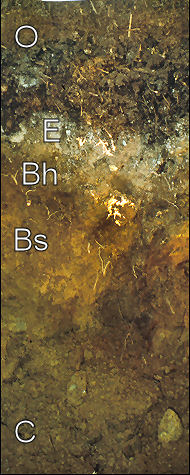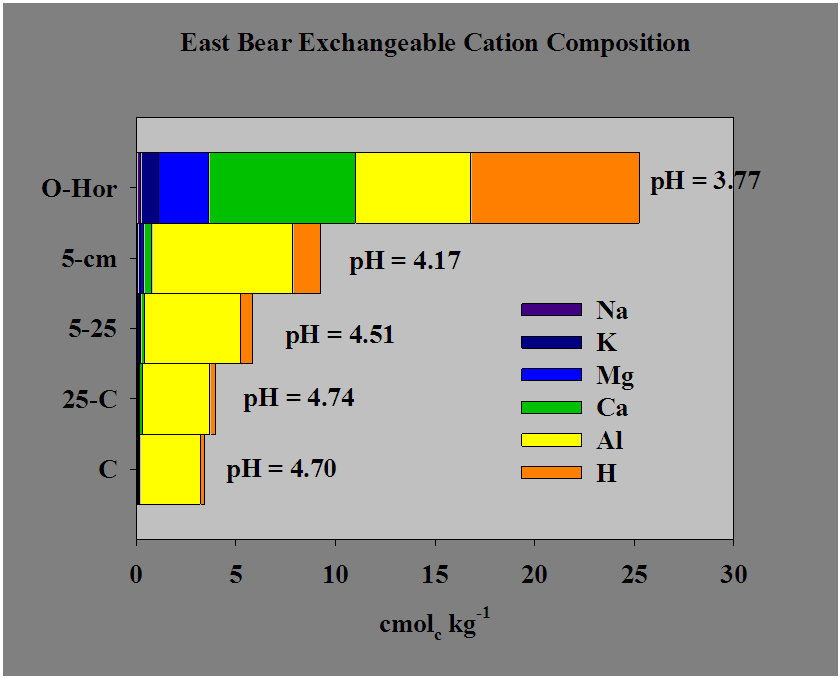Soil Morphology and Chemistry
Soils at BBWM are derived from glacial till that are unsorted and unstratified geological materials transported by the ice of the last continental glacier. These soils are 10,000-12,000 years old or younger, and are considered “young” soils by geologic standards. Because these soils are young, most of the properties of the glacial till in which they are formed are still evident, and the physical and chemical characteristics of the parent material strongly influence the soils we have today. The soils at BBWM are typical of the forested soils in northern New England being relatively acidic, thin (often less than 1 meter in depth), with very distinct horizons (the horizontal layers of the soil) that often have abrupt boundaries. These markedly different horizons result in complex contrasts in physical and chemical processes as plant roots, soil biota, or a drop of water migrates down into the soil and encounters the different layers.

 These pictures represent the “morphology”, or the form and properties of soils that can be observed in the field. The capital letters are called the Master Horizons and the lower case letters modify these symbols. On the left is an image of a typical soil found under hardwood forest types at BBWM.
These pictures represent the “morphology”, or the form and properties of soils that can be observed in the field. The capital letters are called the Master Horizons and the lower case letters modify these symbols. On the left is an image of a typical soil found under hardwood forest types at BBWM.
The surface horizon is mostly organic matter (O Horizon) followed by a thin and highly leached E horizon. There is an abrupt boundary between these layers, and immediately below the E horizon is the B horizon. There is often a narrow band of soil material right below the E horizon and at the top of the B horizon that accumulates organic matter that leaches down from above, and this is called the Bh horizon. That zone fades from a dark brown to a brighter reddish brown color that is called the Bs horizon. The color in the Bs horizon comes from oxidized iron. At the bottom of the soil profile is the C horizon, which is the parent material. Soil Scientists consider the C horizon to be the geologic material from which the soil was formed, and the C horizon is largely unaltered by soil forming processes. It may be that this material is pretty much the same as it was when the glacier left it here. The “d” that modifies this C horizon means that the parent material here is very dense because it supported the weight of the ice when the glacier was on the site of BBWM. We call this basal till.
To the right is a picture of another soil from BBWM, but this one was supporting softwoods. Although these soils have many similarities, BBWM softwoods usually have thicker O horizons, sometimes thicker E horizons, and are thinner soils before the C horizon is encountered.
The chemistry of BBWM soils is also representative of acidic forest soils of the region. Below is a bar graph that shows the exchangeable cation composition and pH of the major horizons in a typical BBWM soil. It is evident from this figure that these soils have low nutrient cation concentrations and base saturation in the mineral soils, and have a low pH. Numerous BBWM publications have further information on BBWM soils, such as Jefts et al. (2004), Fernandez et al. (1999, 2003), Parker et al. (2001, 2002), and Pellerin et al. (2001).

